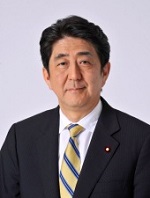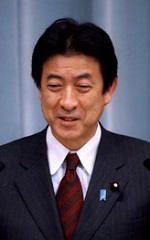Japan's Ministry of Health, Labor and Welfare (MHLW) wants more funds next budget year to pursue innovative drug and medical device development as it also struggles with growing healthcare costs in part brought on by a weaker yen that has made imports more expensive.
 |
| Japan Prime Minister Shinzo Abe |
The request for Y104.3 billion to be managed by the Japan Agency for Medical Research and Development (AMED) in the fiscal year starting April 1, 2016 is part of an Y30.67 trillion ($249 billion) budget sought by the ministry, according to press reports.
Overall for next year, government agencies in Japan seek Y102 trillion as part of record spending under a program led by Prime Minister Shinzo Abe to spur growth and pursue national development goal with healthcare a major focus, Nikkei Asian Review said, as part of an annual exercise in full bloom late last month.
In the case of AMED, created earlier this year in the model of the U.S. NIH, the aim is to receive up to 200,000 substance samples from more than 10 drugmakers for review as part of an overhaul of drug development procedures in the country with a report due at the end of September offering more guidance.
Some of that guidance will focus on producing more generic drugs by ensuring quality through a "blue book" and promotion campaigns to support wider use.
MHLW will also seek to launch its sakigake designation system for fast-track review of drugs deemed to be in crucial need.
 |
| Japan Health Minister Yasuhisa Shiozaki |
But Nikkei said some of the requests could be trimmed as the Finance Ministry has an aim of Y97 trillion for a final spending plan, leaving agency heads to fight for pet projects, noting that prices of medical services and drugs are likely to shift as the draft budget is revised, putting the generics push in particular focus.
Industry groups also say generics will be key in funding for other programs. Japan's cabinet in May told Health Minister Yasuhisa Shiozaki that even setting a goal of an 80% prescription rate for generics by fiscal year 2020 to save about $10.5 billion was not enough.
Whether any money saved however will go to proposed programs--like a database on rare cancers--remains a question with competing demands from basic research to financial incentives. MHLW, for example, has said it wants to strengthen the export competitiveness of the pharmaceutical and medical device industries.
- here's the story from Nikkei Asian Review